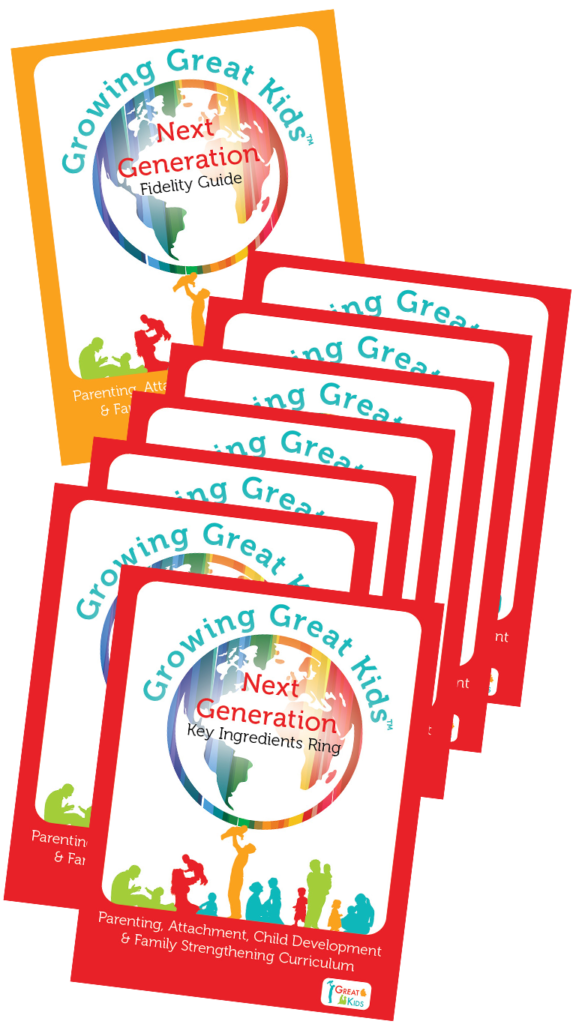In the GGK for Preschoolers in Home Visiting Programs Curriculum Manual, we discuss the Building Blocks for Self-Discipline. This week, we will offer some ideas on how parents can begin teaching children internal control.
Learning self-control is a developmental issue. Children are not born with the ability to manage their own emotions. This ability forms over time through physical and cognitive development. So what kinds of things can we do as adults to support that development?
The good news is that there are lots of fun games and activities that parents and children can do together that will help children develop internal controls. Let’s start by looking at each of the 5 Building Blocks for Self-Discipline. Hopefully, this will get you thinking of activities you might want to introduce to parents.
Building Block #1:
Developing Biological Rhythms through Predictable Daily Routines
Children who know what to expect feel more secure and tend to be more cooperative. By following predictable daily routines with children, starting at birth, parents are wiring their child’s brain for self-control.
Building Block #2:
Learning about their Body and the Physical Space it Occupies
When children understand the space they occupy, they get better at respecting the space that belongs to others. Just telling children about this isn’t enough, they need to learn by doing things that help this skill to evolve. I’m sure you can think of lots ideas for this. Here are just a few examples of activities that will help children learn this concept through physical experience:
- playing in boxes and tunnels,
- climbing through obstacle courses,
- playing hide and seek,
- tracing body parts,
- making footprints in the sand or snow,
- and acting out songs like “Head and Shoulders, Knees and Toes.
Building Block #3:
Being Able to Start and Stop an Action or Behavior
As children learn to stop and start their bodies in play, they are actually wiring their brains to stop and start behaviors that come from their strong emotions. Playing games that teach children to take turns, follow directions, stop and go, and to control the movements of their bodies will lay the foundation for self-control. Can you think of ideas that would work for various age groups? Think of things like “Red light – Green light,” “Simon Says,” “Jump, Jump, Jump,” or “Running and Stopping.”
Building Block #4:
Learning to Use Appropriate Physical Outlets for their Emotions
Encouraging children to use physical activities to vent their emotions teaches them appropriate skills for managing stress as they grow into adults. Young children can be helped to not only express their emotions in words but to also do active things like, breathing deeply, running, throwing or kicking a ball outdoors, jumping, pounding on playdough, or maybe scribbling.
Building Block #5:
Creatively Channeling Impulses in Constructive or Positive Actions
Often we don’t think about teaching children how to channel their emotions to create something beautiful or useful. Giving children time to calm down and allowing them to draw, build, mold clay, or play an instrument can teach them to use their feelings to create something positive. What other ideas can you come up with?
Help parents to remember that repetition is what builds those strong connections in the brain. Lots of time spent on these kind of games and activities, that are appropriate to the age of the child, will not only be a fun way to strengthen relationships, but also will be a huge investment in their child’s future. This kind of support, for children’s developing self-control, will improve the child’s self-esteem, impulse control, and problem solving ability.
As always, feel free to email any topic suggestions or questions to danabroadway@greatkidsinc.net . Be sure to add Great Vine ideas to the subject line of the email.

